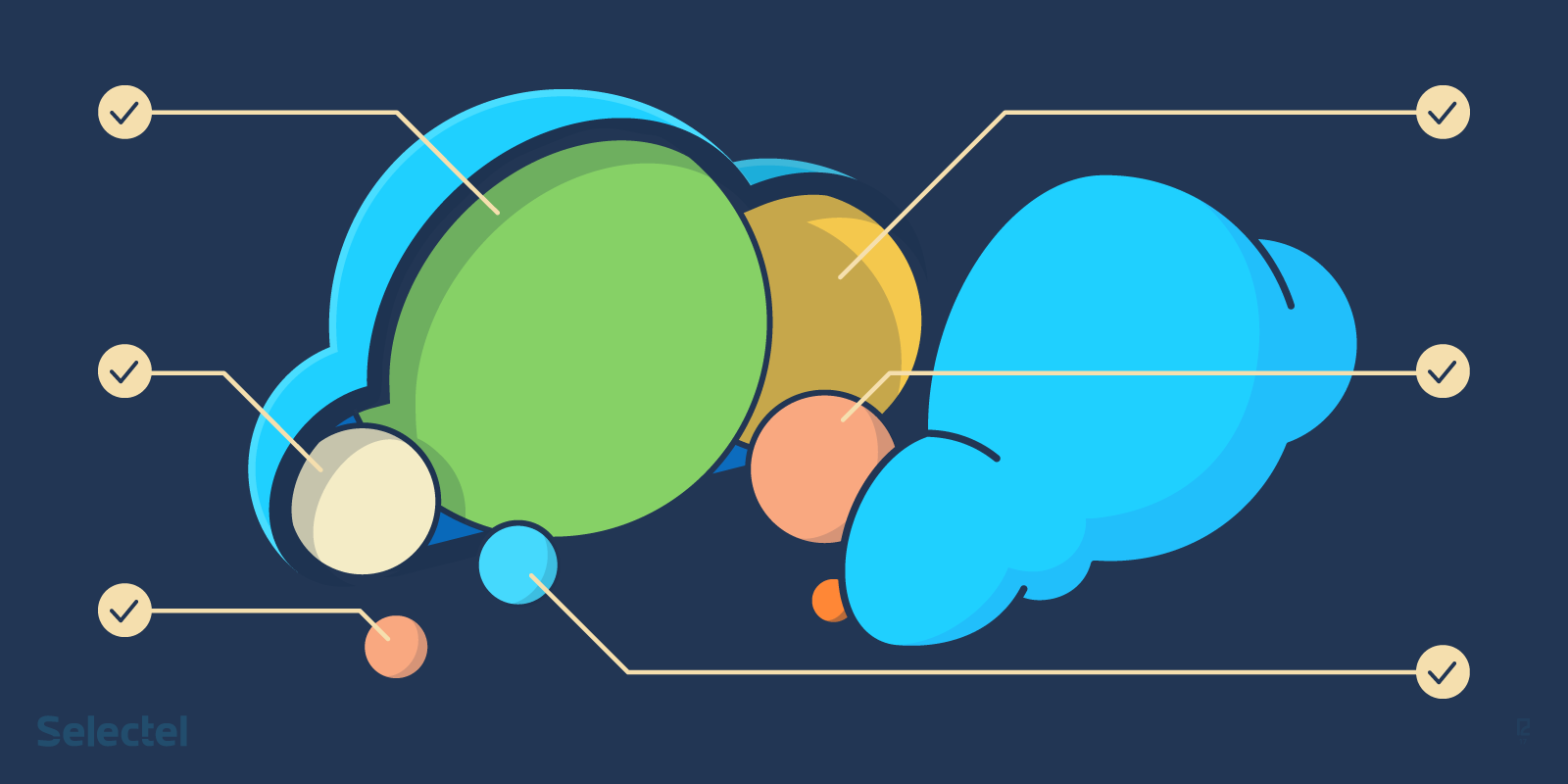Cloud Provider Checklist: Important Factors

The market today is flooded with offers from different cloud service providers. It’s not just a question of just choosing one service over another; clients firstly consider their business requirements and the relevant tasks.
In this post, we’ve compiled a list of the most important features individuals should look for when choosing their cloud service provider. If the best solution for your business is cloud-based, then please feel free to refer to this checklist before making your final decision.

Since each provider has its own understanding of what a cloud solution should consist of, you should firstly take a close look at what’s included in the service.
Most cloud providers offer these basic features:
- the actual virtual machines, which provide the flexibility of virtualization for a wide range of computing tasks (developing, testing, launching applications, etc.)
- snapshots (some providers call these backups), which make “molds” of virtual machines and copies of files and filesystem directories at a specific moment in time
- a DNS for hosting domains on nameservers
- public API
We recommend also keeping an eye out for the following additional services:
Protection from network attacks helps lower the risk of site unavailability by protecting servers and applications from hackers, including DDoS attacks.
Object storage, where you can store backups and save and distribute static data.
A hybrid cloud, which lets you connect virtual machines to physical servers over a local network.
Redundancy at the data center level, which lets you maximize fault tolerance by migrating virtual machines to different data centers while preserving the IP address (redundant routers over VRRP).
If data centers are geographically distributed, you can create a Disaster Recover solution. This is when a project in one region is fully backed up in another, and if one data center goes offline, the project will continue to operate from the other region.
Availability monitoring lets you analyze server operations, port availability, and public service availability (sites and API) from different points around the world.

For budgeting purposes, the provider’s billing system should include the following basic terms:
- publicly available price lists, billing terms and conditions, and contracts
- the ability to work with individuals and companies (legal entities)
- support for all major payment methods: bank cards, e-payment systems, and bank transfers
In addition to these general parameters, clients should also keep an eye out for the following:
The ability to pay for services in your national or major world currencies.
Month-end closing documents, which are important for bookkeeping and accounting purposes.
In accordance with the Russian law on personal data, all information on the cloud platform users should be stored in Russia.
Pay-as-you go payment options, where you pay for resources without any long-term contracts.

The basic service package should include tech support, even if only by e-mail (the response time in this case is usually quite long).
It’s much more convenient for clients to work with tech support when they’re offer a variety of other features, like:
- 24-hour support
- detailed responses for questions submitted from user account
- administration for client systems
- a support-oriented SLA (response time, assistance level)
- knowledge base or FAQ

More often than not, providers give ambiguous parameters for their technical components instead of detailed information: abstract cores, “SSDs” for virtual machines, a general network, etc.
We recommend paying special attention to more detailed description of technical aspects, like:
- if there’s an SLA on virtual machine parameters
- the clock speed and processor type on virtualization servers
- IOPS and Mbps for virtual disks
- bandwidth of virtual network ports

Essential reliability components for the cloud service provider include:
- a Tier III or higher certified data center
- infrastructure redundancy for fault tolerance of resource pool
- a high level of physical security in the data center (cameras, limited server room access, guards)
It’s also a good idea to look for the following when choosing a reliable provider:
Data centers should be company-owned to avoid potential service disruptions if the leasing agreement is dissolved or other issues arise with the landlord.
The cloud infrastructure should be available in multiple data centers that are in geographically different regions.
Direct communication channels and at least 3 or more telecommunications operators should be present in the center.
A long-standing history and experience is an indicator of the operator’s professionalism, which is especially important for long-term projects.
Data center locations in Russia may be an important factor for several types of clients: state institutions, banks, etc.
Many cloud providers are ready to show potential clients their platforms so that they can see that it is reliable and has all of the necessary high-level data center subsystems for themself.
At Selectel, you can sign up for a tour of our data centers from our website.

A fundamental and necessary feature for managing your cloud infrastructure is a self service portal (either an account page or control panel).
Ideally users can perform the following actions from the control panel:
- view technical and financial information for comfortably tracking resource usage and planning expenses
- limit access to different server groups, for example by creating development environments that are isolated from working product systems
- visually display current resources and their cost by server (or project or company). This is convenient for bigger companies with a large number of departments as it lets you track how many resources were allotted to specific projects and the cost
- download accounting documents and reports on resource consumption
Conclusion
We looked at the basic requirements for cloud providers in each of these categories:
√ Functionality
√ Billing
√ Tech Support
√ Technical aspects
√ Reliability
√ Management
It’s important to look for flexible resource options in geographically separate platforms, preferably in Tier III data centers, in order to minimize risks.
Choosing the right cloud provider can yield significant savings as you outsource your IT administration to highly qualified and experienced professionals.